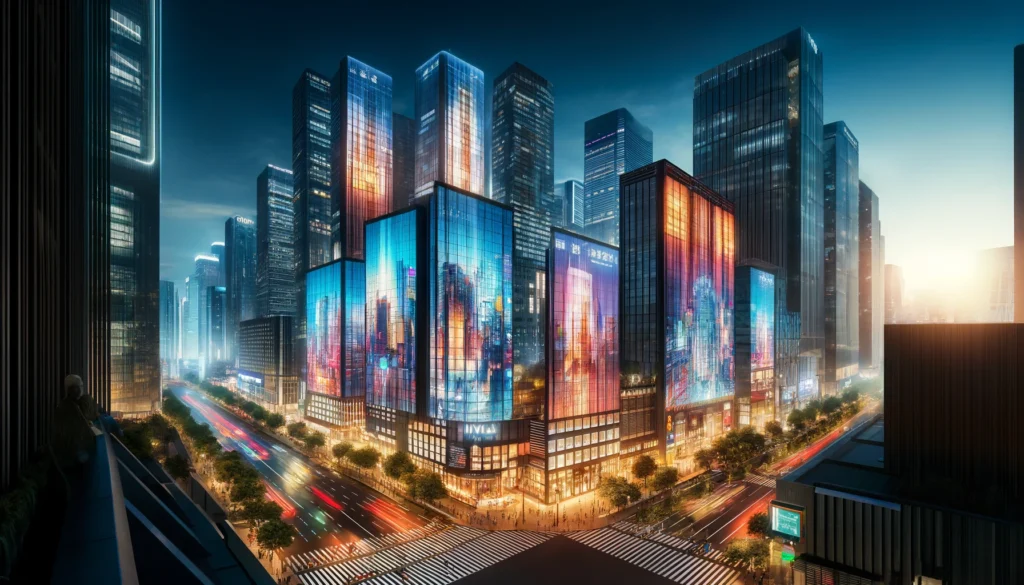
Next Generation Outlets: Revolutionizing Architecture and other surfaces.
The landscape of digital film is undergoing a radical transformation, with innovative outlets emerging that leverage advanced technology to redefine how films are created, distributed, and experienced. Among the most striking examples of this evolution are building facades and architectural marvels like “The Sphere” in Las Vegas, which serve as next-generation digital canvases. Additionally, concepts like Virtual Film Studios and Virtual Lighting Studios, pioneered by companies like Red Digital Cinema, ARRI and others, are reshaping the production process, while direct broadcast technologies are challenging traditional film studio-controlled distribution channels.
Protecting Your Intellectual Property
One of the key concepts of any innovative idea is the ability to protect yourself from over the shoulder coworkers. This is an area where having a strong sense and understanding of Intellectual property comes in handy.
The concept of digital cinema, as I had predicted back in 1993 during interviews related to my first venture into publishing called Camp Magazine, detailed the concept for surface materials that could effectively carry marketing, entertainment, and information into a new paradigm shift from the printed page. This led to my development of an algorithm known as the Xerial Algorithm that became a patent source for my 2013 Patent called “A method for comparing product identifying serial codes” – Its Patent number is US9892440.
In it, my team and I created a bastard version of an organic flow-chart that detailed what became the solution for machine learning by creating carrots and sticks for computer programs to cycle through input variables until the machine was able to deploy logic to seek approval from the viewer or be forced to retry. I learned an invaluable lesson: even with a predictive personality and the ability to map out the future direction of various industries, success often requires more than just vision; it requires strategic support and collaboration. Something at which I failed to find at the time.
Most sane people would move on to other things. I am a bit of a bulwark when it comes to giving up. Screw-them-all was my defensive attitude, so I was Corporately cancelled after starting to Patent my own innovations and finding the support from outside the this environment to fund my visions. I indelibly made my mark, because you can’t erase secured intellectual property filed with the Library of Congress, the Patent office and the Copyright department. Until you spiritually grow enough to see the games for what they are, your only move is to find your purpose and stick to it. I enjoyed the fight, because it’s all I had, or so I thought. The reward has been seeing these empires crumble at the hands of the incompetency running them into the ground. You need to keep fighting for what you believe is right, otherwise, what’s the point of getting out of bed?

Corporate appropriation: from the visionary’s perspective
In corporate culture, it’s not uncommon for the groundbreaking work of visionaries to be adopted and sometimes co-opted by those in higher positions. This dynamic has been explored in various studies and articles. For instance, the Harvard Business Review’s article “How to Stop People from Stealing Your Ideas” discusses strategies to protect intellectual property, while a Forbes article, “When Your Boss Takes Credit For Your Work”, highlights how common this issue is and offers practical advice for handling it. It’s both sad and hilarious to look back at the visions and dreams I had to turn the world on its head. I think it was Harry S. Truman who so eloquently stated: “You can accomplish much in this world, if you don’t care who gets the credit.” Truman’s words highlight the power of selflessness and teamwork in achieving great things. Reagan has also spoken about the importance of teamwork and not caring about who gets the credit.
The easiest way to overcome issues of others stealing intellectual property from you is to simply “Keep Your Mouth Closed.”
The foundational understanding of Intellectual Property (IP) involves recognizing it as a legal concept that grants creators and inventors certain exclusive rights to their creations and inventions. These rights are intended to encourage innovation and creativity by providing economic incentives and protections for their intellectual efforts. Here are the key components:
1. Types of Intellectual Property:
- Patents: Protect inventions and provide the patent holder exclusive rights to use, sell, and license the invention for a certain period, typically 20 years.
- Trademarks: Protect symbols, names, and slogans used to identify goods and services. Trademarks help consumers distinguish between different brands.
- Copyrights: Protect literary, artistic, and musical works, giving creators exclusive rights to reproduce, distribute, and perform their works. Copyright typically lasts for the life of the author plus 70 years.
- Trade Secrets: Protect confidential business information that gives a competitive edge. This protection lasts as long as the information remains secret.
2. Purpose and Objectives:
- Encouragement of Innovation: By granting exclusive rights, IP laws incentivize individuals and companies to create and invest in new ideas and products.
- Economic Growth: IP rights can be economically valuable, contributing to a company’s revenue through licensing, sales, and attracting investments.
- Cultural Development: Protecting artistic and literary works ensures that creators are rewarded, fostering a rich cultural environment.
3. Legal Framework:
- National Laws: Each country has its own set of laws governing IP. For example, the United States has the U.S. Patent and Trademark Office (USPTO) and the Copyright Office.
- International Agreements: Treaties like the World Intellectual Property Organization (WIPO) conventions and the Agreement on Trade-Related Aspects of Intellectual Property Rights (TRIPS) facilitate global protection and enforcement of IP rights.
4. Balance of Interests:
- Rights of Creators: Ensuring creators can control and benefit from their work.
- Public Access: After a certain period, IP-protected works enter the public domain, allowing the public to freely use and build upon them.
- Fair Use and Limitations: IP laws often include exceptions, such as fair use in copyright law, allowing limited use without permission for purposes like criticism, news reporting, and education.
5. Challenges and Controversies:
- Enforcement: Ensuring IP rights are respected and enforced can be difficult, especially across borders.
- Digital Age Issues: The rise of the internet and digital technologies has posed challenges in areas like piracy, digital rights management, and the balance between IP protection and access to information.
- Ethical Considerations: Debates on the morality of IP laws, especially concerning essential medicines, traditional knowledge, and the balance between private rights and public good.
Understanding these foundational elements helps grasp how IP law operates and its significance in fostering innovation, protecting creators, and balancing public and private interests.
Innovating Beyond Adversity
As someone who foresaw the potential of digital cinema and the need for advanced surface materials early on, I chose to embrace these challenges and continue innovating in other arenas. My journey through the realms of technology and media has been guided by the principle of sharing knowledge and processes with others, helping to inspire and support the next generation of visionaries.
Making an Impact
Despite the obstacles, my early predictions about digital media have come to fruition, significantly impacting how we consume marketing, entertainment, and information today. By continually exploring new fields and sharing my insights, I have contributed to various advancements and inspired others to think creatively and strategically. Corporate appropriation remains a significant issue for innovators, as reflected in numerous stories and articles.
Recognizing and addressing this issue is crucial for fostering a more supportive and fair environment for innovation. My experience underscores the importance of standing by one’s vision, protecting and promoting ideas, and continuing to innovate, no matter the challenges. By sharing these processes and encouraging collaboration, we can create a culture that values and uplifts visionary thinking, ultimately driving progress across industries.
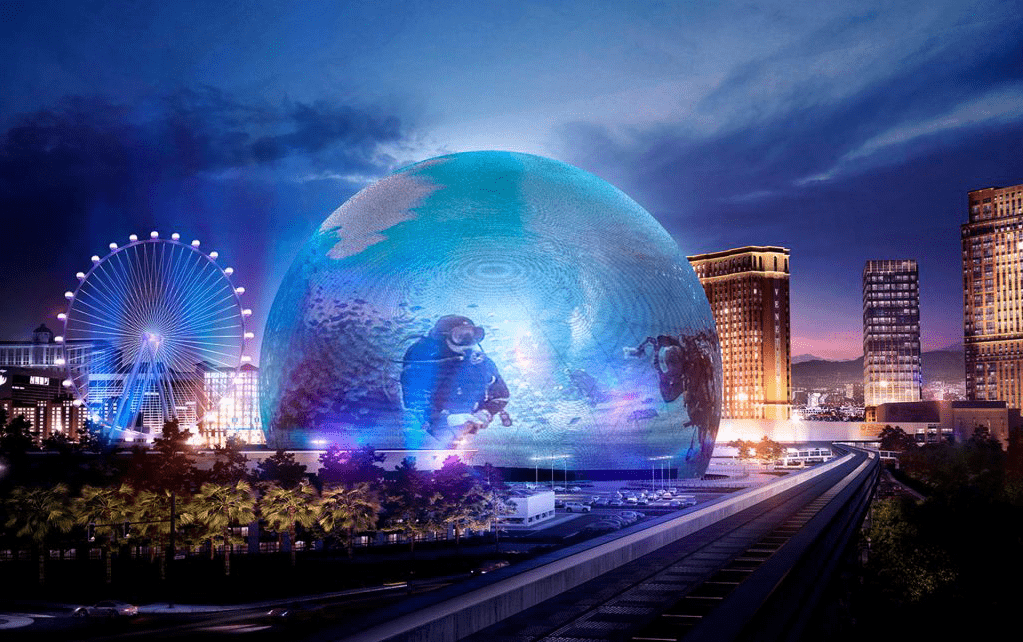
Reimagining Urban Landscapes: Exploring Architecture and Building Facades as Dynamic Substrates for Digital Marketing, Cinema, and Messaging
“The Sphere” in Las Vegas stands as a testament to the potential of integrating digital film with architecture.
This futuristic structure is not just a building but a massive, immersive digital screen capable of displaying high-resolution, dynamic content. With a surface area of 580,000 square feet covered in LED panels, “The Sphere” can transform into a breathtaking display of moving images, offering new opportunities for filmmakers and advertisers alike. This kind of digital facade allows for unparalleled storytelling experiences, where the architecture itself becomes a part of the narrative. As urban landscapes become more digitally integrated, we can expect to see more buildings adopting similar technologies, turning cities into living, breathing canvases for film and multimedia art.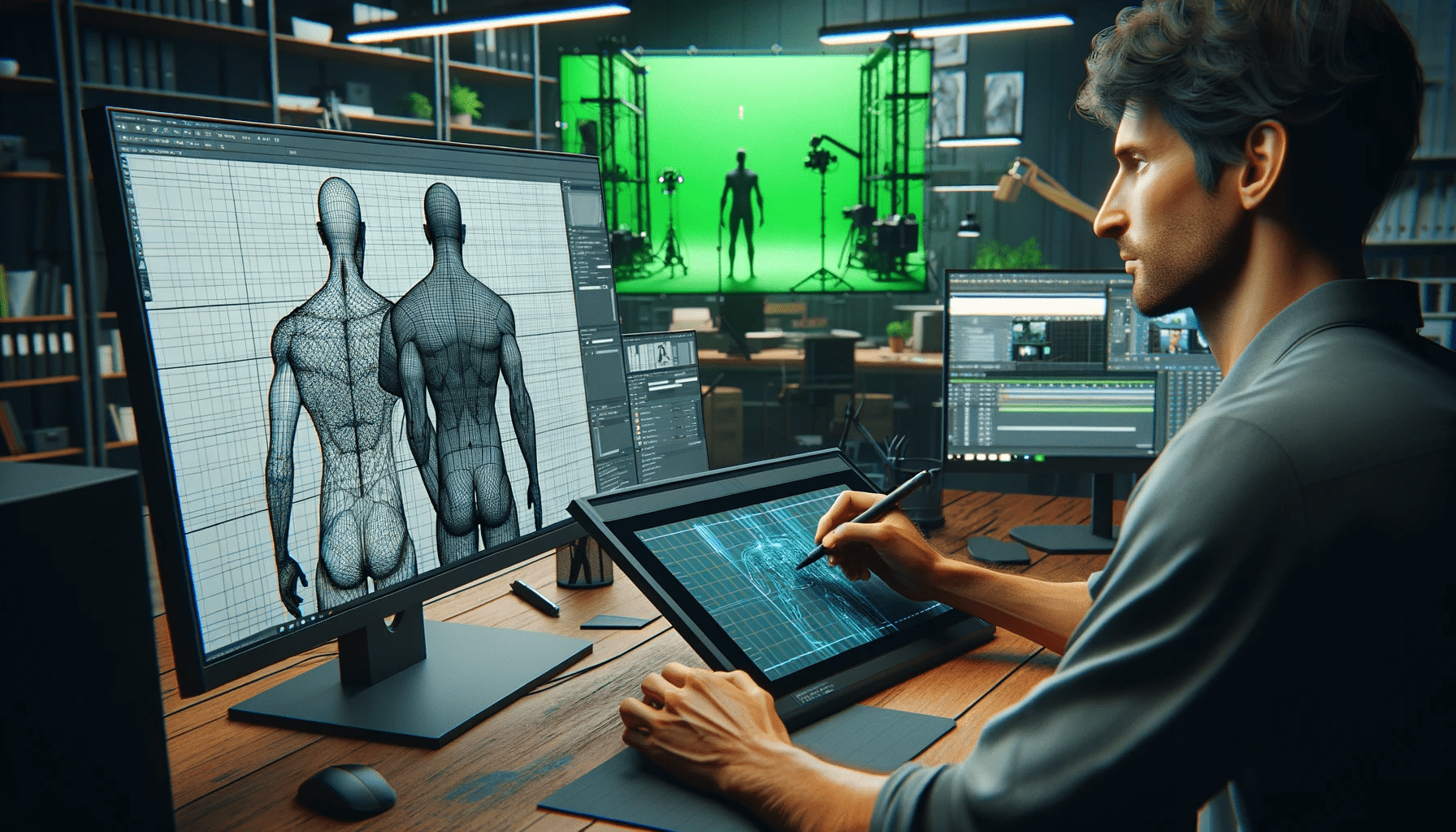
Virtual Film Studios And Virtual Lighting Studios
The advent of Virtual Film Studios marks a significant shift in film production. These studios, often equipped with advanced motion capture and real-time rendering technologies, enable filmmakers to create complex, immersive environments without the need for physical sets. Red Digital Cinema, a leader in digital cinema technology, has been at the forefront of this innovation, providing high-resolution cameras and digital tools that facilitate the creation of virtual worlds.
Virtual Lighting Studios are another groundbreaking development. Traditional film production relies heavily on physical lighting setups to achieve the desired visual effects. However, virtual lighting allows filmmakers to manipulate light sources digitally, offering greater flexibility and creative control. This technology, combined with high-resolution digital cameras, allows for real-time adjustments and more dynamic, visually stunning scenes.
Direct Broadcast And Bypassing Traditional Distribution
One of the most disruptive trends in the film industry is the move towards direct broadcast, bypassing traditional film studio-controlled distribution outlets. This approach leverages internet and streaming technologies to deliver content directly to audiences, removing intermediaries and democratizing access to films.
Platforms like Netflix, Amazon Prime, and Disney+ have already demonstrated the viability and popularity of direct-to-consumer distribution. Independent filmmakers and smaller studios are also embracing this model, using platforms like YouTube, Vimeo, and emerging blockchain-based solutions to reach global audiences without the constraints of traditional distribution networks.

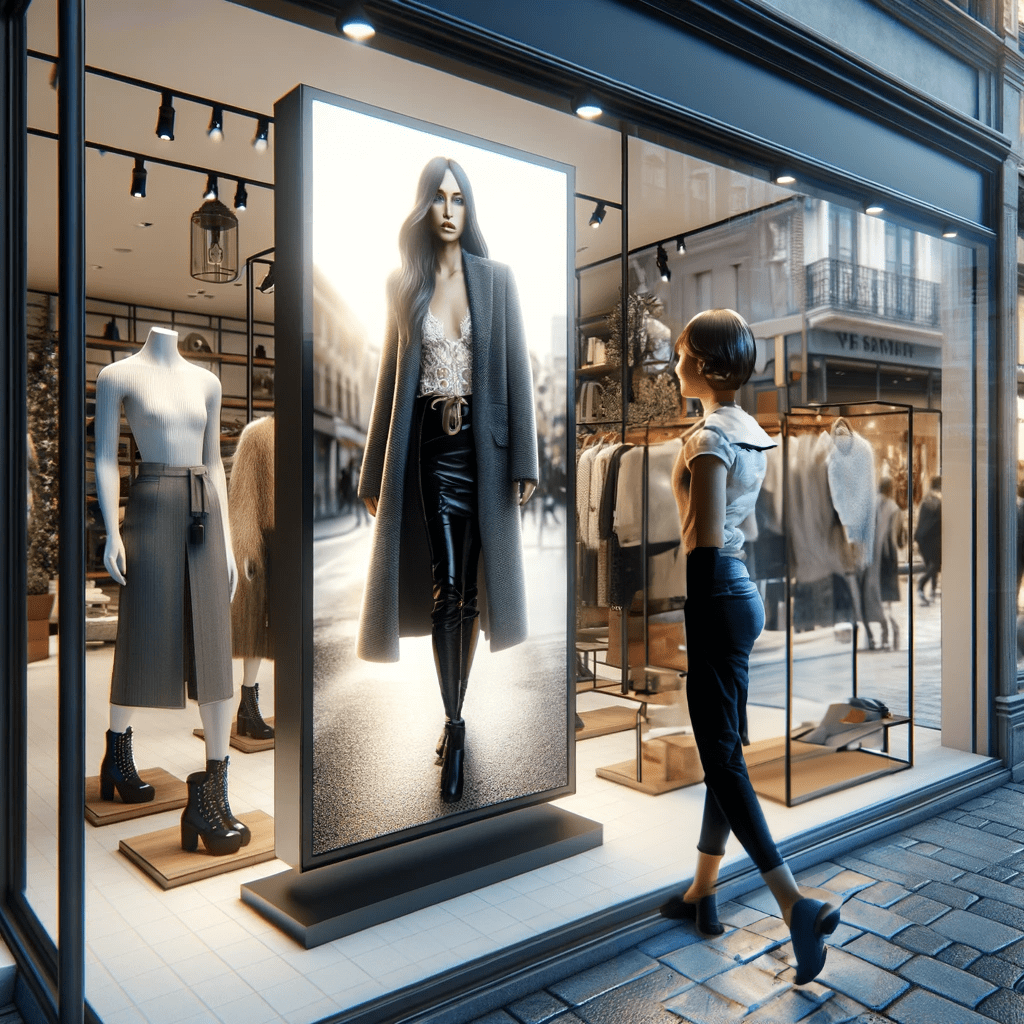
Next Generation Outlets:
the Walk-By Clothing Kiosk Experience
In an era where technology continually reshapes our everyday experiences, the retail industry is no exception. Enter the latest innovation: the Walk-By Clothing Kiosk, an interactive digital experience transforming the way customers engage with fashion boutiques. This cutting-edge kiosk snaps a photo of passing customers and seamlessly integrates them into the boutique’s clothing editorial, offering a personalized and immersive shopping journey.
The Future of Fashion Retail
How It Works:
The Walk-By Clothing Kiosk is strategically placed at the entrance or prominent locations within the boutique. As customers walk by, the kiosk uses advanced facial recognition and high-resolution cameras to snap their photo. Instantly, the kiosk’s sophisticated software integrates the customer’s image into various editorial layouts, showcasing them in the boutique’s latest fashion offerings.
Enhancing Customer Experience:
This innovative approach creates a unique and engaging experience for customers. Seeing themselves in professional, magazine-style editorials not only boosts their confidence but also helps them visualize how different outfits might look on them. It bridges the gap between the virtual and physical shopping worlds, making the process more interactive and enjoyable.
Personalization and Engagement:
The kiosk’s ability to personalize the shopping experience is a significant draw for customers. By providing a glimpse of how they might look in different outfits, the kiosk encourages them to explore styles they might not have considered otherwise. This personalized touch helps build a stronger connection between the customer and the boutique, fostering brand loyalty.
Benefits for Boutiques
Increased Foot Traffic:
The novelty and interactive nature of the Walk-By Clothing Kiosk attract curious passersby, drawing more potential customers into the store. This increased foot traffic can lead to higher sales and greater brand exposure.
Enhanced Marketing:
The digital editorial images created by the kiosk can be shared on social media, turning customers into brand ambassadors. Encouraging customers to post their images with branded hashtags can create a buzz online, extending the boutique’s reach and attracting a wider audience.
Data Insights:
The kiosk can also provide valuable data insights. By analyzing which styles and outfits customers engage with the most, boutiques can tailor their inventory and marketing strategies to better meet customer preferences and trends.
The Technological Edge
Seamless Integration:
The technology behind the Walk-By Clothing Kiosk is designed for seamless integration into the boutique environment. The high-resolution touch screens, coupled with advanced image processing software, ensure that the final editorial images are of professional quality, enhancing the boutique’s upscale image.
Privacy and Security:
To address privacy concerns, the kiosk is equipped with robust security features. Customers’ photos are processed and displayed in real-time, with no long-term storage of personal data unless explicitly permitted by the customer. This ensures that the kiosk adheres to data protection regulations while providing a secure user experience.
Conclusion
The Walk-By Clothing Kiosk is a game-changer in the retail industry, blending technology and fashion to create a novel, personalized shopping experience. By allowing customers to see themselves in the boutique’s latest styles through professional editorial layouts, the kiosk not only enhances customer engagement but also drives foot traffic and marketing opportunities for boutiques. As this technology becomes more prevalent, it is set to redefine the boundaries of retail, making shopping more interactive, personalized, and enjoyable than ever before.
Slot Machines, VR Headsets, and Gaming
The evolution of digital cinematography and film production is not limited to traditional film and television. Next-generation outlets such as slot machines, VR headsets, and gaming setups are becoming integral parts of this landscape, offering new opportunities for immersive storytelling and interactive experiences. These technologies are redefining the entertainment industry and aligning with the digital cinematography and film studios of the future.
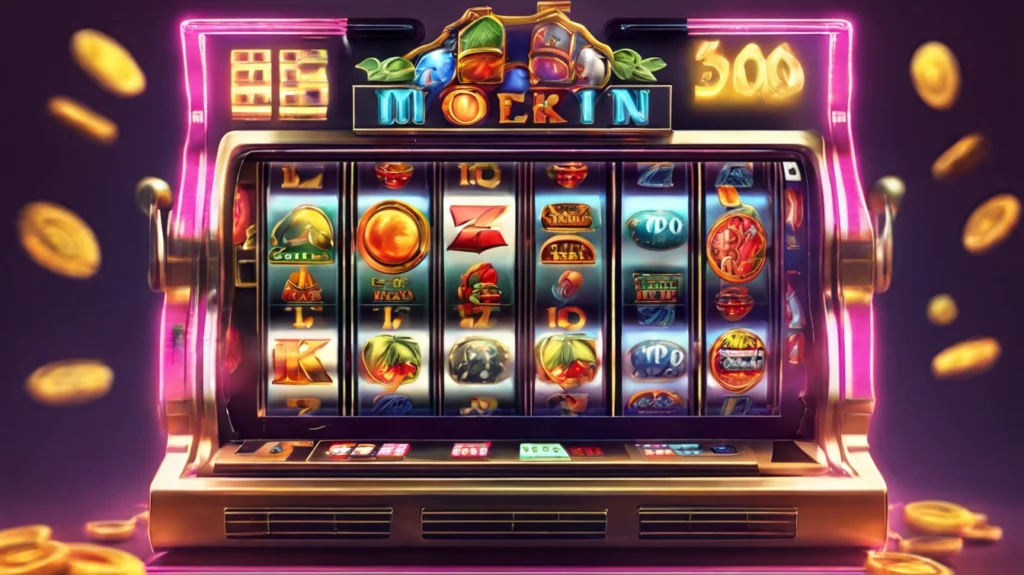
Slot Machines and Casino Entertainment
Modern slot machines have evolved from simple mechanical devices to complex digital platforms featuring high-resolution screens, engaging animations, and interactive elements. Content creation for these machines involves:
- High-Quality Graphics and Animations: Utilizing advanced graphics software to create vibrant, engaging visuals that capture players’ attention.
- Story-Driven Content: Incorporating narratives and themes that enhance the gaming experience, making it more immersive and enjoyable.
- Sound Design: Developing captivating soundtracks and sound effects that complement the visual experience and add to the excitement.
Virtual Reality Headsets
- VR headsets, such as the Apple Vision, offer unparalleled immersive experiences by placing users in fully interactive 3D environments. Creating content for VR involves:
- 3D Modeling and Animation: Building detailed, lifelike environments and characters using 3D modeling software.
- Interactive Storytelling: Designing narratives that allow users to interact with the environment and make choices that affect the outcome.
- Real-Time Rendering: Utilizing powerful graphics engines to render high-quality visuals in real-time, ensuring a seamless and immersive experience.
Home Gaming and Arcade Machines
- The gaming industry has seen a significant shift towards high-definition, immersive experiences both at home and in arcades. Content creation for these platforms includes:
- Game Design and Development: Crafting engaging gameplay mechanics and designing levels that challenge and entertain players.
- High-Resolution Graphics: Employing cutting-edge graphics technology to create stunning visuals that enhance the gaming experience.
- Integration with Digital Cinematography: Leveraging techniques from the film industry, such as motion capture and advanced lighting, to create more realistic and cinematic game experiences.
The Future of the Film Studio
As these next-generation outlets continue to evolve, they are increasingly integrated into the broader ecosystem of digital cinematography and film production. Virtual film studios and virtual lighting studios play a crucial role in this integration, enabling the creation of high-quality, interactive content for a variety of platforms. The processes involved include:
- Virtual Film Studios: Utilizing advanced motion capture and real-time rendering technologies to create immersive environments and characters without the need for physical sets.
- Virtual Lighting Studios: Implementing digital lighting techniques to enhance the visual quality and realism of the content, allowing for greater creative control and flexibility.
- Direct Broadcast and Distribution: Leveraging internet and streaming technologies to deliver content directly to audiences, bypassing traditional distribution channels and democratizing access to high-quality entertainment.
The next generation of digital outlets, including slot machines, VR headsets, and gaming setups, are opening up new outlets for content creators to transform the entertainment industry from a studio centric operation to a whole new content licensing model that generates revenue and licensing royalties from completely separate sources. By integrating advanced digital cinematography techniques and leveraging the capabilities of virtual film and lighting studios, content creators can produce immersive, high-quality experiences that captivate audiences. As these technologies continue to evolve, they will play an increasingly important role in shaping the future of entertainment and interactive storytelling.
Creating a Showreel of Your Digital Filmmaking Capabilities
A showreel is a powerful tool for showcasing your digital filmmaking skills to potential clients, employers, and collaborators. Here’s a step-by-step guide on how to create an effective showreel that highlights your capabilities.
Step 1: Plan Your Showreel
Define Your Goals:
- Determine the purpose of your showreel. Are you looking to attract new clients, apply for a job, or showcase your work to potential collaborators?
- Identify your target audience. This will help you tailor your showreel to meet their expectations and interests.
Select Your Best Work:
- Choose clips that best represent your skills and style. Aim for diversity in your selection to showcase a range of techniques and genres.
- Prioritize quality over quantity. It’s better to have a shorter reel with high-quality content than a longer one with mediocre clips.
Step 2: Organize Your Content
Create a Rough Outline:
- Arrange your selected clips in a logical sequence. Start with a strong opening to grab attention and end with a memorable closing.
- Group similar types of work together (e.g., action sequences, dramatic scenes, special effects).
Keep It Concise:
- Aim for a duration of 1-2 minutes. This is long enough to showcase your skills but short enough to maintain the viewer’s interest.
- Avoid lengthy scenes. Use shorter, impactful clips that quickly convey your abilities.
Step 3: Edit Your Showreel
Use Professional Editing Software:
- Choose software you are comfortable with, such as Adobe Premiere Pro, Final Cut Pro, or DaVinci Resolve.
- Ensure your editing software can handle the resolution and format of your source material.
Focus on Pacing and Rhythm:
- Edit your clips to create a dynamic and engaging flow. Pay attention to the pacing to keep the viewer interested.
- Use transitions sparingly. Simple cuts and fades are usually more effective than complex transitions.
Add Music and Sound Effects:
- Select a soundtrack that complements your visuals and sets the desired tone. Ensure the music is properly licensed for use.
- Sync sound effects and dialogue accurately to enhance the impact of your clips.
Include Titles and Credits:
- Add a title card at the beginning with your name and contact information.
- Include brief descriptions or context for each clip if necessary (e.g., role, project name).
- End with a closing card that reiterates your contact information and thanks the viewer for watching.
Step 4: Review and Refine
Get Feedback:
- Show your rough cut to trusted colleagues, mentors, or friends for feedback.
- Pay attention to their suggestions, especially if multiple people point out the same issues.
Refine Your Showreel:
- Make necessary adjustments based on the feedback you receive.
- Ensure your showreel is free of technical issues, such as audio sync problems or visual artifacts.
Check Technical Specifications:
- Export your showreel in a high-quality format suitable for online sharing and playback on different devices.
- Create versions optimized for different platforms if needed (e.g., social media, email, websites).
Step 5: Distribute Your Showreel
Upload to Online Platforms:
- Upload your showreel to popular video-sharing platforms like Vimeo and YouTube. These platforms allow easy sharing and embedding.
- Use appropriate tags, descriptions, and thumbnails to make your showreel easily discoverable.
Share on Social Media:
- Share your showreel on professional social media platforms like LinkedIn, as well as other networks where your target audience is active.
- Engage with your audience by responding to comments and messages.
Include in Your Portfolio:
- Embed your showreel on your personal website or portfolio. Make it easy for visitors to find and view your reel.
- Include a link to your showreel in your email signature and on your business cards.
Reach Out to Potential Clients and Employers:
- Send personalized emails to potential clients, employers, and collaborators with a link to your showreel.
- Attend industry events and networking opportunities with a digital copy of your showreel on your mobile device for quick sharing.
- Be Authentic: Your showreel should reflect your personal style and strengths. Don’t try to mimic others; let your unique voice shine through.
- Keep Updating: Regularly update your showreel with new and improved work to keep it fresh and relevant.
- Tell a Story: Even though it’s a compilation of clips, aim to create a narrative flow that engages the viewer from start to finish.
By following these steps, you can create a compelling showreel that effectively showcases your digital filmmaking capabilities and helps you stand out in a competitive industry.
